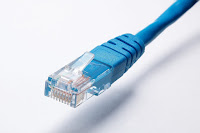Types Of Fiber Optic Cables – Multi-Mode And Single-Mode
When building optical fiber cabling, several considerations must be made. One of the most crucial decisions to make is whether to install a single-mode or multi-mode. Since the distance, capacity, and budget of your network are all affected by this selection; it's imperative to know the distinctions between these two types of fiber optic glass. Today in this blog, we will learn more about these two different types so that there is no confusion the next time when you buy fiber optic cables online.
Core Diameter
The core diameter of a single-mode fiber is significantly less than that of a multi-mode fiber. Even if alternative diameters are available, the average core diameter is 9 µm. Multi-mode fiber core diameters are generally between 50 µm and 62.5 µm, allowing for more "light-collecting" capability and easier connections.
Color Sheath
Single-mode cable is covered with a yellow outer sheath for non-military applications. At the same time, the multi-mode fiber is coated with an orange or aqua jacket, according to the TIA-598C standard specification.
Bandwidth
The maximum bandwidth of multi-mode fiber is now 28000MHz*km of OM5 fiber, restricted by its light mode. Since only one light mode may travel through at a time, single-mode fiber bandwidth is potentially infinite.
Cost of Installation
Single-mode optical fiber is frequently less expensive than multi-mode optical fiber. When establishing a 1G fiber optic network that you want to upgrade to 10G or faster in the future, single-mode fiber costs roughly half as much as multi-mode fiber. The cost of SFP modules increases by 35% when using multi-mode OM3 or OM4 fiber. Although single-mode optics is more costly, the labor expenses of changing multi-mode lenses are far greater.
Wavelength & Light Source
Multi-mode fiber cables employ low-cost light sources such as LEDs and VCSELs that function at the 850nm and 1300nm wavelengths due to the large core size of the multi-mode fiber. The light is pumped into single-mode fibers using laser or laser diodes. The wavelengths of 1550 nm and 1310 nm are the most widely utilized single-mode fiber wavelengths.
Cables.com is here to help you buy optic fiber cables. Ensure to check out what we have for our shoppers at a very reasonable price.


Comments
Post a Comment